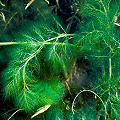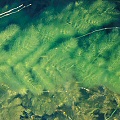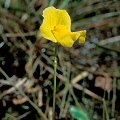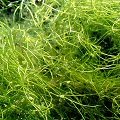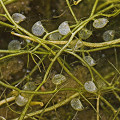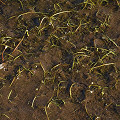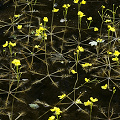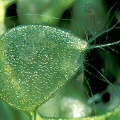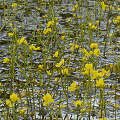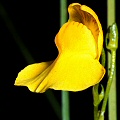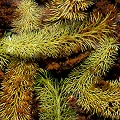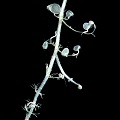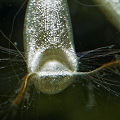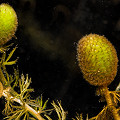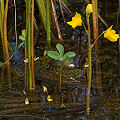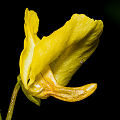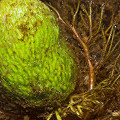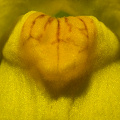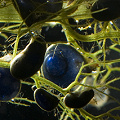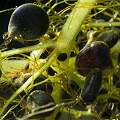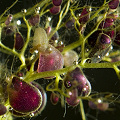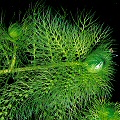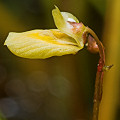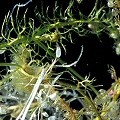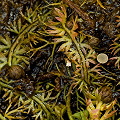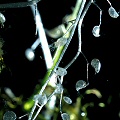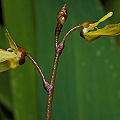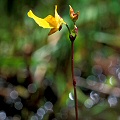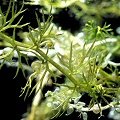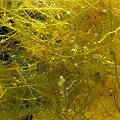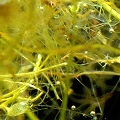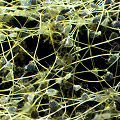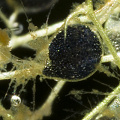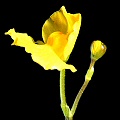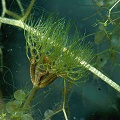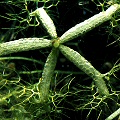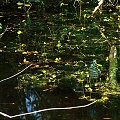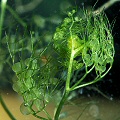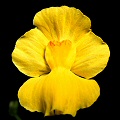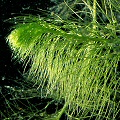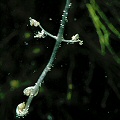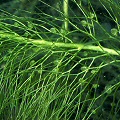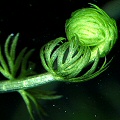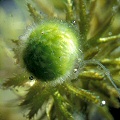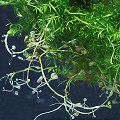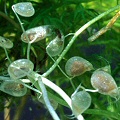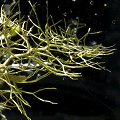| Utricularia section Utricularia | ||
|---|---|---|
| Species | Range | Habit1 |
| U. aurea | Asia, Australia | SA |
| U. australis | Old world, Australia & NZ | SA |
| U. benjaminiana | Africa, Madagascar, C & S America | SA/AA |
| U. biovularioides | Brazil | SA |
| U. bremii | c and w Europe, Asia | SA/AA |
| U. breviscapa | Antilles, South America | SA |
| U. cymbantha | tropical and s Africa, Madagascar | SA |
| U. dimorphantha | Japan | SA |
| U. floridana | USA | AA |
| U. foliosa | Africa, Madagascar, Americas | SA |
| U. geminiscapa | Canada, USA | SA/AA |
| U. gibba | Global! | SA/AA |
| U. hydrocarpa | Mexico, Central and South America | SA |
| U. incisa | Cuba | SA |
| U. inflata | USA | SA |
| U. inflexa | Africa, Madagascar, India | SA |
| U. intermedia | North America, Europe, Asia | AA |
| U. macrorhiza | e Asia, North America | SA |
| U. minor | North America, Asia, Europe | AA |
| U. muelleri | Australia, New Guinea | SA |
| U. naviculata | Venezuela, Brazil | SA |
| U. ochroleuca | North America, Asia, Europe | AA |
| U. olivacea | Americas | SA |
| U. perversa | Mexico | SA |
| U. platensis | South America | SA |
| U. poconensis | Brazil, Bolivia, Argentina | SA |
| U. punctata | Asia | SA |
| U. radiata | Canada, USA | SA |
| U. raynalii | tropical Africa | SA |
| U. reflexa | Africa, Madagascar, Australia | SA |
| U. stellaris | Africa, Madagascar, Asia, Australia | SA |
| U. striata | USA | AA |
| U. stygia | Europe, North America | AA |
| U. tenuicaulis | Japan | SA |
| U. vulgaris | Europe, n Africa, Asia | SA |
| U. warmingii | Venezuela, Brazil, Bolivia, Colombia | SA |
| 1SA=suspended aquatic; AA=affixed aquatic. | ||
Q: About Utricularia subgenus Utricularia section Utricularia
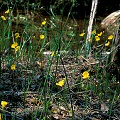
"yellow-flowered
aquatic Utricularia"
A: With this section, we enter a zone that sends terror into the hearts of weak-kneed botanists
and naturalists. These undernourished folks are the ones who return from field trips with detailed lists of all the
other carnivorous plants they
saw, but as for the bladderworts all they can do is mutter something about having seen some "yellow-flowered
aquatic Utricularia." Bah! They can do better, I say!
Section Utricularia is a relatively natural group and its species share many
characteristics, especially in the form of the bladders. Many of these
species are from temperate or even arctic habitats---the only section of the genus with much of a representation in such
chilly habitats. These species usually survive the cold winter by forming dense little buds called turions.
Below I discuss all the species in the USA, and a few others as well, so as
to satisfy my beleaguered, non-USA readers--bless their put-upon
souls.
There are a few differences between my treatment of this section, and the treatment by Ellison & Adamec (2018).
1) They include Utricularia aurea var. gracilis (Oliv.) Phuong, but I generally do
not bother with subspecific taxa in this genus.
2) They reduce Utricularia tenuicaulis to a variety of U. australis, and while this is in
agreement with Taylor (1989), I will keep it separate (see comments below).
3)They include the following three species, which I consider synonyms of other species:
Utricularia bentensis Komyia, which I treat as Utricularia bremii.
Utricularia chiakiana Komiya & C.Shibata, which I treat as Utricularia gibba.
Utricularia corneliana R.W. Jobson, which I treat as Utricularia reflexa.
Utricularia australis
Three of the species from section Utricularia
are big, suspended aquatics that look
very much like each other. As a result, they are frequently confused with each other. They are U. australis,
U. vulgaris, and U. macrorhiza. Often the easiest way to distinguish them
is by range. Utricularia australis occurs in a large area including much of Europe, Asia,
Africa, Australia, and New Zealand. Wow! Distinguishing this species from U. vulgaris is not
trivial, and I merely point you to Taylor's monograph for details.
Utricularia dimorphantha--A highly endangered species, this was once found throughout Japan but now
is found only in a very few sites. Quite probably this will become extinct except in botanical collections and a few highly managed
locations. Like U. geminiscapa, it produces underwater cleistogamous flowers.
Utricularia floridana
This USA endemic is one of the only species of carnivorous plant in the USA
I have never seen, and it is a beauty! It has huge leaves that are of two forms---either foxtail-like leafy shoots, or
bladderous branches. The one time I may have seen this plant was on a tour of a nature preserve in Florida. The preserve manager
jokingly encouraged me to wade into the pond and investigate the plants, but I was kept at bay by the three alligators, two
venomous cottonmouths, and two harmless but still ornery watersnakes.
Utricularia foliosa
Whatever this plant is doing, it is doing it right because it has a large range
thoughout the Americas and Africa. The species is readily identified because its large stolons are flattened and covered with a
disgusting gelatinous goo. The fruit look like little grapes, and float the water surface. This plant can become tremendously
large, and dominates the ponds it calls home.
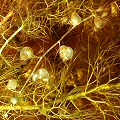 U. geminiscapa
U. geminiscapa
dimorphism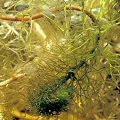 U. geminiscapa
U. geminiscapa
hooked shoot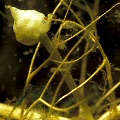 U. geminiscapa
U. geminiscapa
cleistogamy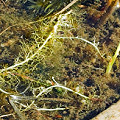 U. geminiscapa
U. geminiscapa
plant
Utricularia geminiscapa
An interesting species that occurs in northeastern USA and adjacent Canada.
This species can be very difficult to distinguish from U. macrorhiza when not in flower. I cannot
agree with Taylor on using the terminal leaf length for this purpose---the
most reliable characters are the following: weak shoot dimorphism often present,
turion buds less than 1cm long, a hook-shape to the end of the growing shoot, and of course the nature of the
microscopic quadrifid glands (which I always check if flowers are not present).
Of course, in flower the species can be distinguished immediately. A real give-away is when you see the tiny little
cleistogamous, underwater flowers often produced at the base of the normal inflorescences. This behavior is the origin of
the species name.
Utricularia gibba
This species has one of the largest ranges of all the Utricularia.
As expected for a plant with such a range, many forms have been given separate names but they have all collapsed into a single
large, variable species. This is enormously sensible, as intermediate specimens can be found for all the so-called
"species" such as "U. biflora" or
"U. exoleta". In the USA, if you are looking at a Utricularia
that has an upper corolla lip that is larger than the lower corolla lip, you have narrowed your search down to only a few
species, and this is one of them. Vegetatively, it is usually very small with only threadlike stolons and numerous 2-tipped
leaves. Larger specimens exist, however, and these can look confoundingly like U. striata.
The species Utricularia chiakiana Komiya & Shibata is probably just this species.
For cultivation hints refer to my general article on this species.
Utricularia inflata
This species has really fabulous floats that keep the inflorescence out of the
water. It is often confused with U. radiata, but the two are easy to separate, as I describe under
that species. This plant grows in all kinds of ditches and ponds that other species do not relish. It is this catholic taste that
has contributed to it being an invasive weed in Washington state, where some dork introduced the plant. It is causing enough
trouble in that state that it may be declared a noxious weed. Meanwhile, populations in New York are also possibly non-native.
This is all interesting, since this is one of the USA's few endemic species!
Utricularia intermedia
This affixed aquatic is of considerable interest to me. It is a neat
plant because its shoots are strongly dimorphic. Some are leafy and float in the water or just under the water surface, while
others are bladderous and lurk in the muck. It can be difficult to distinguish this plant from other species, but the
following features are useful in identifying its vegetation from other dimorphic species. First, make sure the leaves have
lateral setulae (bristles) on the leaf margins. These setulae should be mounted directly on the margins, or at most on
tiny teeth that are shorter than the bristles. There should be about 5-12(20) of these little bristles. (If they come in clumps, count
each clump as one bristle for this feature.) The leaf tips should be obtuse, but this feature takes some practice and a microscope.
See my further comments under U. ochroleuca and U. stygia. If you have a
compound microscope, check the quadrifid gland arms and make sure they are diverging by only 0-30°.
Utricularia macrorhiza
This is the North American addition to the triumvirate of large aquatics
that includes U. vulgaris and U. australis. If you are exploring a lake, bog,
or fen in the USA (except for in the southeast) and find a big, rank, suspended aquatic species it is very likely this monster.
I have spent many, many field days and many, many herbarium days studying this plant and am amazed at its many forms. I particularly
like the various color expressions and size spectra in its bladders: some plants have only a few very large bladders, other plants
have a range of bladder sizes. Even so, all the bladders appear functional.
Many people confuse this species with U. minor, which is understandable since this plant sometimes is very small (especially in poor conditions). Out of flower, they can always be identified by the fact that U. minor leaves never have setulae (microscopic bristles) on their margins. Use at least 40× to look for them. This species is distinct from U. vulgaris. The latter species does not occur in the USA; in their overlap zone in Siberia they maintain their species differences. For example, U. macrorhiza has an upwards hooking acute spur, while the spur of U. vulgaris is straight (near its end) and obtuse. The names U. vulgaris var. americana or U. vulgaris var. macrorhiza are simply outmoded synonyms.
Utricularia minor
This is a darling little species with weakly to strongly dimorphic shoots. The leaves
can be flattened or filamentary. What is really indicative is that the leaves have no bristles on their margins. The small
flowers with their tiny (or almost absent) spurs are also unmistakeable. This species is frequently found in mucky, relatively
nutrient-rich fens that would scare away other Utricularia.
Utricularia ochroleuca
This species is probably of hybrid origin, i.e.,
U. minor × intermedia. As expected, it is intermediate between these two species. The leaves are
not quite as strictly dimorphic as those of U. intermedia, but more so than the other parent. The
leaves have only a few bristles (perhaps 4-7) on each terminal segment. Also, the bristles are on tiny teeth about as long as
the bristles themselves. The teeth and the leaf segment tip itself is pointed, acute, and similar to the leaf tips of
U. minor. The spur of U. ochroleuca is about half the length of the lower
corolla lip, while in U. intermedia it is about as long as the lower lip.
The quadrifid gland arms diverge by 30-45° (long pair) and 90-160° (short pair). See my further comments under
the discussion of U. stygia.
Utricularia olivacea
Among the giant species on this page, little U. olivacea
surely looks out of place. Even U. gibba dwarfs this tiny species. This species does not really have
leaf segments--just stalks holding bladders. The flowers are tiny, although certainly not the tiniest in the entire world
of flowering plants (as is often claimed). Interestingly, the calyx lobes (which start off smooth-edged) become deeply
fringed as the seeds mature. How odd!
Growing this species is surprisingly difficult. I had expected they
would be weedy, as I have seen them growing well with U. gibba, but my first attempt to grow them as
such resulted in dead plants within a few days! The second time I grew them, I tried them with a vigorous colony of
U. gibba as a kind of buffering element. The plants died, but this time after a few weeks. I am now
successful, but only by using Typha leaf litter, as for affixed species.
Utricularia radiata
This is one of the many species in this section that have cool floats on the
inflorescences. It is smaller than U. inflata, but this is not a reliable character to use in
separating the species. A characters that is reliable is the difference in float arm shape (it is cylindrical in
U. radiata, while they taper at both ends for U. inflata).
The leaf branching is also significantly different. At each node, two leaf branches emerge, and how each branch
further divides is important--in U. radiata this is largely
dichotomous, with the secondary leaf segments shorter than the primary leaf segments. The leaves of
U. inflata are more or less pinnate, and the secondary leaf segment is longer than at least one
of the primary leaf segments.
Utricularia reflexa
A rather variable species. A specimen collected in Australia (the only known collection for that country)
was the basis for U. corneliana R.W. Jobson, which is treated as synonymous to U. reflexa.
Utricularia striata
This USA endemic has had a difficult history. For a long time, many people identified this plant as
"U. fibrosa", but for reasons Taylor describes in detail, this name is invalid. "Utricularia fibrosa" specimens are usually either
this species or the rather similar U. gibba. The best way to tell this species from the latter, by the way, is that
U. striata has dimorphic shoots. It also tends to be overall larger and more vigorous, but this takes some practice to recognize.
Utricularia stygia
This mostly European species has a few sites within North America, too.
This species was split from U. ochroleuca primarily on the basis of the tiny quadrifid glands in the
bladders. Specifically, the quadrifid gland arms for U. stygia diverge by 20-45° (long pair) and
40-80° (short pair). These distinctions may make excellent sense in Europe. But do they make sense in North America?
I am not sure. But if we follow these criteria exactly, apparently some of the "U. ochroleuca"
sites that I study in California are actually U. stygia! I prefer to think of them as separate
hybridization events, as both species are probably of hybrid origin.
Utricularia vulgaris
This large species is found in
Europe, North Africa, and
temperate Asia. In the USA, U. macrorhiza is often collected and incorrectly identified as
U. vulgaris; Utricularia vulgaris does not occur in
North America.
Utricularia tenuicaulis
Taylor reduced this to synonymy with U. australis, but I have it on good authority
(yeah, I'm looking at you, Andreas F.) that this should be resurrected.
Page citations: Fleischmann, A. 2012, 2015; Jobson, R.W. 2012b; Rice, B.A. 1994b, 2005c, 2006a;
Schlosser, E. 2003; Taylor, P. 1989; Thor, G. 1988; personal observations.
